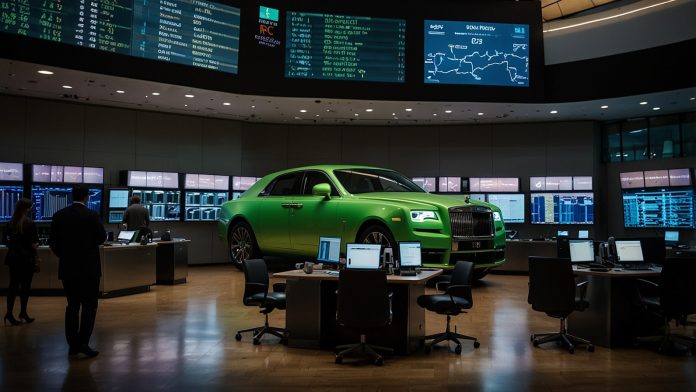The British engineering giant, Rolls-Royce Holdings, stormed into the London Stock Exchange today, as the company stock climbed up 6% following the announcement of a mammoth PS3 billion engine supply agreement with Emirates Airlines.
The deal, including Trent XWB engines on A350 widebodies, gives strength to the civil aerospace division of the FTSE 100 company and is an indicator of a good revival in long-haul travel demand after the worldwide shocks.
The deal, announced at the end of the Dubai Airshow, will mark an extended relationship and will come with long-term service offerings, which will secure a consistent stream of revenues until 2040.
The management pointed to unprecedented momentum in the growth of orders in the aviation sector, and the backlog has now reached PS35 billion, 15 years of annual growth. The stock, which began at 280 pence, shot up to 297 pence, bringing PS1.2 billion to market capitalisation and lifting the FTSE 100 by 0.6 per cent in a mixed international performance.
This coup comes when airlines are refilling fleets with net-zero ambitions, and the fuel-saving engines by Rolls-Royce reduce emissions by 25% compared to its predecessors. It was a cheer of analysts, as they raised their targets by 10% predicting 12% growth of EBITDA in 2026 on volume runs and pricing power. Rolls is on fire in a recovering industry, said a pundit in the aerospace industry.
The rally highlights the revival of UK manufacturing, which is enhanced by Budget tax incentives such as super-deductions on green technologies, which is the benefit of the HQ in Derby, as it can now counter the previous layoffs caused by the Covid downturns.
FTSE Aerospace Lift-Off as Rolls-Royce Fuels Sector Optimism Wave
The rise of Rolls-Royce boosted competitors, pushing BAE Systems and Melrose Industries to a 2-4% increase, pushing the FTSE 250 industrial barometer to a one-month high. The blue-chips of London went up slightly with the help of the sterling dips boosting exporters, but banks plummeted due to bets on rate cuts.
Broad aeration tailwinds drive the story: IATA forecasts 4 per cent. passenger expansion in 2026 owing to Asian-Pacific reopenings and business travel recoveries. Still, the storm is there: titanium crunches and Ukraine-related geopolitical tensions may drive the prices up.
In the case of Rolls-Royce, which has been relaunched after almost collapsing in 2020 with a PS7 billion recap, this justifies the re-engineering of CEO Tufan Erginbilgic. The board indicated dividend restarts at a level of 5 pence and PS1 billion debt settlements, taking advantage of PS2.5 billion of free cash. Our restructuring will be sustainable in profits, Erginbilgin claimed, looking at defence advances such as Tempest propulsion.
Volumes increased twice the norm, and sovereign funds snapped up shares. According to estimation, the 15 times forward P/E underestimates growth as compared to Boeing suppliers.
Can Green Propulsion Propel Rolls-Royce to Pre-pandemic Glory? Sky the Limit
There is innovation bringing forward thrust: hydrogen demonstrator tests and modular nuclear reactors give alternative approaches to jetting and use energy transitions. Hybrid-electric alliances with EasyJet are to achieve short-haul decarbonisation by 2035.
Concerns about doubters: spikes in oil volatility drive hedging of their requirements, and a possible slowdown in the US would restrain their orders. Customs bottlenecks of Brexit are still there, but AUKUS deals are in effect open doors.
Shareholders, riding this wave of the day, spot value. As civil aero revenues stand at 50 per cent and grow, Rolls-Royce targets PS20bn sales by 2030.
Finally, the Rolls-Royce thrust is the example of the renaissance of British ingenuity, which uses technological tools to break through the skies and space itself. Travel being high, this Derby dynamo goes on, quickening patience with speed.



 Bitcoin
Bitcoin  Ethereum
Ethereum  Tether
Tether  XRP
XRP  USDC
USDC  TRON
TRON  Lido Staked Ether
Lido Staked Ether  Cardano
Cardano  Avalanche
Avalanche  Toncoin
Toncoin  Wrapped SOL
Wrapped SOL